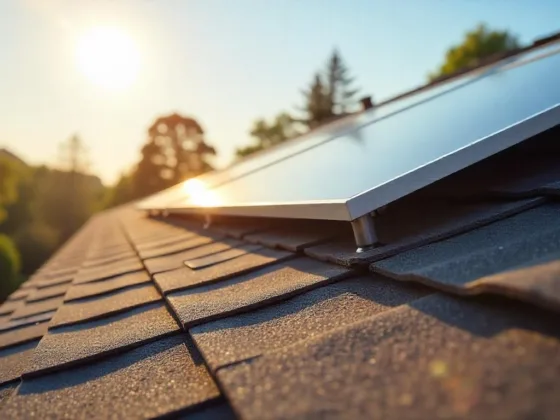Table of Contents Show
Introduction
Welcome to the exciting world of DIY electrical wiring! Whether you’re an enthusiastic hobbyist or looking to tackle a practical home improvement project, you’ve come to the right place.
Why Conduit Installation Matters for Garage Wiring Projects
Proper conduit installation is not just crucial, but absolutely non-negotiable when it comes to garage wiring projects. Why so? Well, conduits protect your wires from potential damage caused by weather, rodents, or accidental impact. Safety first, as they say!
The Benefits of a Well-Planned Conduit System
But hey! It’s not all about safety. Having a well-planned conduit system in place allows for easier maintenance and future upgrades without causing havoc on your walls. Talk about a win-win situation.
What You’ll Learn in This Guide
So here’s the hook: Ready to take matters into your own hands and safely wire up your garage lighting and receptacles? Buckle up for a comprehensive step-by-step guide that will arm you with the know-how for this electrifying adventure.
Remember, this guide isn’t just about getting the job done. It’s about doing it correctly, safely, and complying with all necessary regulations. So grab your toolbox and let’s get started on this garage circuit journey!
Also Read: Appliance Installation Safety: Tips to Keep You and Your Home Secure
Step 1: Planning Your Conduit Installation
Before diving into your garage wiring project, it’s important to have a solid plan in place. Here’s what you need to do:
Assess Your Electrical Needs
Start by figuring out what specific electrical requirements you have for your garage. Ask yourself these questions:
- What power tools will you be using?
- Are you planning to add more lights or outlets?
- Do you have any future plans for expanding your workshop?
By answering these questions, you’ll have a better understanding of what needs to be done.
Determine the Number of Circuits Needed
Next, you’ll want to determine how many circuits you’ll need for your garage. Here are a few things to consider:
- For heavy-duty power tools, it’s best to have separate circuits for each tool.
- When it comes to lighting, having multiple fixtures on a single circuit can lead to overloading.
Remember, it’s always better to have more circuits than you think you’ll need. This way, you can avoid potential issues down the line.
Get Familiar with NEC Guidelines
The National Electrical Code (NEC) is a set of guidelines that ensures safe electrical installations. Familiarize yourself with these guidelines, as they will play a crucial role in your conduit installation.
Some key aspects of the NEC guidelines include:
- Circuit amperage limits
- Grounding and bonding requirements
- Using the right wire size and type for your installation
Understanding and following these guidelines will help prevent any electrical hazards in the future.
By taking the time to plan and understand your needs, as well as following NEC guidelines, you’ll be setting yourself up for a successful and safe conduit installation.
Step 2: Choosing the Right Conduit Materials and Wiring

When wiring your garage, it’s important to choose the right conduit and wiring. This decision is just as crucial as the planning stage. The conduit not only protects your wires from damage but also ensures that your installation meets safety standards.
Types of Conduit Materials
- EMT Conduit: Short for Electrical Metallic Tubing, EMT is a lightweight option that’s easy to bend and install. It’s perfect for indoor use, particularly in dry areas. Its durability makes it a favorite for many DIY enthusiasts.
- PVC Conduit: Polyvinyl Chloride conduit is your go-to if you’re routing electrical cables in areas exposed to moisture. PVC is non-conductive and resistant to corrosion, and its waterproof nature makes it ideal for outdoor or damp locations.
Each material has its place in a well-thought-out wiring project:
- Use EMT indoors where exposure to the elements isn’t a concern.
- Choose PVC conduit to protect against moisture in underground applications or wet areas of your garage.
Choosing Wire Gauge and Type
Selecting the right wire gauge is important to ensure that the current flowing through your circuits doesn’t cause excessive heat or hazards. Here’s what you need to know:
- For most home lighting circuits that carry a load of 15 amps, a 14-gauge wire is usually sufficient.
- However, if you anticipate running power tools or other high-draw equipment on receptacle circuits, it’s better to use a 12-gauge wire.
Remember: the lower the gauge number, the thicker the wire. Thicker wires can carry more current without heating up.
THHN Wiring stands out as a popular choice due to its thermoplastic insulation and heat resistance properties. It’s versatile enough for use with both EMT and PVC conduits and comes in various gauges suited for different circuit requirements.
By carefully selecting the right conduit material and pairing it with THHN wiring of the appropriate gauge, you’ll ensure a safe and durable installation for your garage wiring project.
Step 3: Ensuring Proper Grounding and Safety Measures
Electricity is not something to mess with—without proper precautions, it can go from being your handy invisible servant to a dangerous foe. Grounding is the hero in this plot, providing a safe path for stray electricity to travel directly into the earth rather than through your body—ouch! Here’s why you should give grounding the respect it deserves:
Grounding: Your Electrical System’s Best Friend
- Protects Against Electrical Overload: When too much current tries to party on a circuit, grounding gives it an exit strategy, reducing the risk of fires or damage to your appliances.
- Stabilizes Voltage Levels: Grounding keeps voltage levels in check across circuits, ensuring that everything runs smoothly and consistently.
- Person & Property Safety: It’s all fun and games until someone gets shocked. Grounding minimizes the risk of accidental shocks by providing a path of least resistance to electrical current.
When it comes to safety in the garage (or anywhere really), GFCI receptacles are like that cautious friend who always carries a first aid kit. They’re especially critical in areas where water and moisture say hello often—like garages where you wash cars or water seeps in during rainstorms.
GFCI Receptacle: The Lifeguard of Your Electrical System
- Detects Imbalances: GFCIs monitor the balance between incoming and outgoing current. If they sense an imbalance that could mean current is flowing through an unintended path (like a person), they trip.
- Cuts Power Swiftly: In case of an imbalance, a GFCI receptacle reacts faster than you can say “electric shock,” cutting off power in a fraction of a second to prevent injury.
- Code Compliant: The National Electrical Code (NEC) loves these devices because they save lives. They mandate their use in many areas of your home, including garages.
Installation Tip: While installing GFCI receptacles, always follow manufacturer instructions carefully. Incorrect installation can render them ineffective, which is like having a guard dog that snoozes during a burglary.
By now, it’s clear as day: grounding and GFCIs are non-negotiable for electrical safety. With these safeguards installed, you’re ready to move on to threading wires through the conduit like a pro and getting those connections snug as a bug.
Step 4: Running Wires Through Conduit and Making Connections

Now that your garage has proper grounding and GFCI receptacles, it’s time to focus on running wires through conduits and connecting them to your light fixtures and outlets.
Understanding Surface-Mounted Wiring
Surface-mounted wiring is a popular method used in garages. In this technique, the conduit acts as a protective sleeve for the wires. Here’s how you can run these wires effectively:
- Measure twice, cut once: Carefully measure the length of conduit you need before cutting it. It’s better to have extra wire than falling short.
- Color-code your wires: To avoid confusion later, use different colored wires for different purposes (e.g., black for hot, white for neutral, and green or bare for ground).
- Leave slack: Allow some extra wire at each end. This will make pulling the wire through the conduit easier and leave room for adjustments during connections.
Connecting Wires to Light Fixtures
When connecting wires to light fixtures, follow these steps:
- Before starting any work, remember to turn off the power at your circuit breaker.
- Identify the wires on your light fixture (typically black for hot, white for neutral, and green or bare for ground).
- Match the colors: Connect each wire from your fixture to its corresponding color in your system (e.g., black to black, white to white).
Making Outlet Connections
For outlet connections, here’s what you need to do:
- Once again, ensure that power is off at your circuit breaker.
- Identify the slots in the outlet: The brass or gold slot is for hot wires (black), silver is for neutral (white), and green is for ground.
- Insert the corresponding wires into their slots and tighten the screws securely.
Mastering these techniques will be beneficial for your conduit installation project. Remember, practice makes perfect and patience is key.
Step 5: Troubleshooting Common Issues in Conduit Installations
Embrace the Challenges
Installing electrical conduits by yourself isn’t always easy, especially when it comes to garage installations. There will be obstacles along the way, but don’t worry – these problems are normal and can be solved with the right know-how.
Problem 1: Difficulty Pulling Wires Through Conduit
If you’re having trouble pulling wires through the conduit, it’s similar to dealing with a stubborn garden hose. The best solution here is to use wire lubricant. Apply it generously to reduce friction and make the process smoother.
Problem 2: Damaged Wire Insulation
Sometimes, when wires are pulled through tight bends, their insulation can get damaged. To prevent this from happening, make sure any sharp edges are smoothed out before installation. If damage does occur, you’ll need to replace the affected wire to avoid potential issues later on.
Problem 3: Twisted Wires
When wires twist together inside the conduit, it can cause problems in the future. To avoid this, straighten your wires before threading them through and avoid pushing too many at once.
Mastering Troubleshooting Techniques
Being familiar with troubleshooting techniques is crucial for successful conduit installations. Here are two important methods:
Technique 1: Identifying Faulty Connections
A multimeter is a handy tool for identifying faulty connections. Use it to check if there’s a continuous flow of electricity between wires and their respective terminals. If there’s no continuity, it means there’s a problem with the connection.
Technique 2: Dealing with Circuit Interruptions
Circuit interruptions often happen when breakers trip or fuses blow. When faced with this issue, start by checking your breaker box first. If a breaker has tripped, simply reset it and test your circuit again. In case a fuse has blown, you’ll need to replace it with a new one.
In the world of conduit installations, having a problem-solving mindset is crucial. As you encounter these common issues and apply effective troubleshooting methods, remember to take it one step at a time and prioritize safety in all your actions.
Conclusion

Tackling DIY electrical wiring, especially for a space as versatile as a garage, is no small feat. By now, you should feel more confident in your ability to master conduit installation for both garage lighting and receptacles.
Remember, the path to becoming a savvy DIY electrician is paved with patience, attention to detail, and an unwavering commitment to safety.
Safety should be your co-pilot in this journey. Whether it’s respecting the might of electricity or meticulously following NEC guidelines, always err on the side of caution. If you hit a snag or find yourself in waters too deep, don’t hesitate to call in the cavalry — professional electricians are your allies.
Embrace the learning curve. Every twist and turn of the conduit pipe, each wire splice, and every secured outlet box is a step toward refining your skills. And when you flip that switch for the first time and bask in the glow of your well-lit garage—know that it’s not just the lights you’ve powered up but a whole new level of DIY prowess.
So go ahead, gear up with knowledge and tools, and let safety guide you through every cut, clamp, and connection. Your garage circuit awaits its transformation!
Also Read: Garage Storage Ideas for Extra Garage Overhead Ceiling and Wall Storage
Citation
- Family Handyman (2024) ‘Install Surface Mounted Wiring and Electric Conduit (DIY)’. Family Handyman. Available at: https://www.familyhandyman.com/project/how-to-install-surface-mounted-wiring-and-conduit/ (Accessed: 01 March 2024).
- Family Handyman. “How To Add Additional Outlets To Your Garage Using Conduits.” Last modified February 9, 2024. Accessed March 1, 2024. https://www.familyhandyman.com/project/how-to-wire-a-finished-garage/.
- Better Homes & Gardens. “How to Install Conduit to Protect Wiring in Your Home.” Better Homes & Gardens. Accessed March 1, 2024. https://www.bhg.com/home-improvement/electrical/how-to-install-metal-conduit/.
FAQs (Frequently Asked Questions)
Proper conduit installation is crucial in garage wiring projects as it ensures the safety and compliance of the electrical system. It helps protect the wires from physical damage and provides a secure pathway for the electrical conductors.
When planning conduit installation, you can assess your electrical needs in the garage by determining the number of lighting and receptacle circuits required based on the intended use of the space. This will help you understand the load requirements and plan the conduit installation accordingly.
Common challenges encountered during DIY electrical installation in a garage may include faulty connections, circuit interruptions, or difficulties in running wires through the conduit. It’s important to be aware of these potential issues and have troubleshooting methods ready to address them.
Grounding is essential in electrical systems as it helps prevent electric shock and protects against potential fires. In garage wiring, proper grounding ensures the safety of the entire electrical setup, especially when dealing with metal conduits or exposed wiring.
For garage wiring, EMT (Electrical Metallic Tubing) conduit and PVC (Polyvinyl Chloride) conduit are commonly used materials. The choice between them depends on factors such as environmental conditions, cost, and specific application requirements. It’s important to select a material that meets NEC guidelines and suits your project needs.
Installing Ground Fault Circuit Interrupter (GFCI) receptacles in a garage wiring setup is crucial for enhanced shock protection. GFCIs are designed to quickly shut off power when they detect an imbalance, preventing potential electric shocks and reducing the risk of electrical hazards.










